Papers by Marine Dallakyan
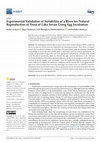
Water
The endangered endemic species Sevan trout (Salmo ischchan Kessler, 1877) is under the threat of ... more The endangered endemic species Sevan trout (Salmo ischchan Kessler, 1877) is under the threat of extinction and its survival is dependent on restocking by smolts. Thus, there is an urgent need to find an effective solution for restocking wild populations. After developing a theoretical methodology to reveal the most suitable parts of spawning rivers for natural reproduction, we consider the incubation of eggs in the wild as an appropriate method for the validation of the results of the theoretical assessment. Thus, we estimate the eggs’ survival differences in the wild and microcosm conditions which found significant differences in the sac-fry emergence rate in the zones assessed as “partly suitable” and “unsuitable”. Also, the results show that the emergence of eggs in the wild was less than in the microcosm conditions and the success rate of emergence of eyed eggs in the wild was higher than that of the green eggs. The results of one-way ANOVA, correlation and general linear mixed...
Biological Journal of Armenia
The Marmarik River is the largest tributary of the Hrazdan River. However, it is heavily isolated... more The Marmarik River is the largest tributary of the Hrazdan River. However, it is heavily isolated from the main course of the river by the Aghbyurak dam. Considering low density of population and lack of pollution sources in the basin, the Marmarik River valley is a well-known biodiversity area within Armenia. As in many small tributaries, there is a limited knowledge about the ichthyofauna and its spatial distribution in the drainage basin. Thus, the aim of the study was to reveal the species structure and spatial distribution of fish in the Marmarik River. The results show five species of fish permanently dwelling the river where the most abundant one is the Kura chub and the rarest species is Khramicarp. Limited distribution was revealed also for Brown trout and Berg loach.
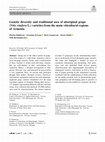
Genetic Resources and Crop Evolution, 2020
Being one of the oldest centers of grapevine (Vitis vinifera L.) cultivation, Armenia is rich in ... more Being one of the oldest centers of grapevine (Vitis vinifera L.) cultivation, Armenia is rich in local old grape varieties. Today, only a small portion of these varieties is widely used and many varieties that are well-adapted to their environment face extinction. Hence, a detailed investigation of their genetic diversity, uses, and potential for preservation is very important. Here, we present data generated through field studies, literature reviews, interviews with farmers, and genetic analyses for some important, neglected grape varieties distributed over the main viticulture regions of Armenia. During field surveys, 175 samples representing different cultivars and their clones were collected and analyzed. 20 SSR markers were used for characterization. The cluster analyses revealed 71 genotypes clearly demonstrating Armenia's rich diversity of local aboriginal grape varieties. The study also highlights a number of cases of synonymy, homonymy and misnaming. New genotypes were also identified. Field surveys, genetic characterization and ampelographic description of endangered varieties, wild forms, as well as observation of grapes growing in old, abandoned vineyards combined with the establishment of field collections are becoming essential tools in documenting grapevine germplasm and developing plans to preserve it and minimize an irreversible loss of genetic diversity.
The Electronic Journal of Natural Science, May 17, 2022
Биология внутренних вод, 2016
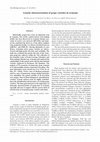
Vitis: Journal of Grapevine Research, 2015
Historically, grapes have been an important crop in Armenia. The world‘s earliest known wine-maki... more Historically, grapes have been an important crop in Armenia. The world‘s earliest known wine-making facility has been discovered in Armenia during excavation of Areni-1 cave between 2007-2010, and analysis has confirmed the discovery of the oldest complete wine production facility ever discovered dated between 6,000 B.C. and 8,000 B.C. Having thousands of years history, Armenian native grape varieties are characterized with high genetic diversity and variability. The study has evaluated the genetic diversity of the Armenian grapevine cultivars within the Vitis collection of the Scientific Center of Fruit Growing, Viticulture and Wine-making (Merdzavan, Armenia) and analysed the relationships of this genetic pool with the international varieties registered in European Vitis Database. The analysis of 59 accessions of grapevines from Armenia at 23 microsatellite markers generated 336 alleles. The most informative locus turned out to be VVS2 (21 alleles, PI = 0.016). Twelve cases of ide...
Water Science and Technology: Water Supply, 2018
Complex studies of seasonal differences of the ecological state of Masrik River (Armenia) were re... more Complex studies of seasonal differences of the ecological state of Masrik River (Armenia) were realized in 2017. Water quality was assessed by BMWP, ASPT and FBI indices based on studies of qualitative and quantitative structures of benthic macro-invertebrates. Potential reference sites in the basin were revealed using the %EPT taxa index in addition to water quality assessment by bioindication methods as well as hydro-chemical, -physical and -morphological measurements. The applicability of the used biotic indices for the different parts of Masrik River was discussed.
Inland Water Biology, 2016
Qualitative and quantitative structures of benthic macro-invertebrates, macrophytes, zooplankton,... more Qualitative and quantitative structures of benthic macro-invertebrates, macrophytes, zooplankton, as well as ichthyofauna and fish parasites of the shallow areas of Small Sevan that flooded as a result of an increase in the lake's water level are analyzed. It is shown that the most appropriate conditions for the development of hydrobionts were found in the area that was flooded earlier and is directly connected with the lake. In contrast, the worst conditions occurred in the area that was flooded later and is minimally connected with the lake.

Environmental Monitoring and Assessment, 2021
The Government of the Republic of Armenia (RA) strives to ensure the measures to achieve good eco... more The Government of the Republic of Armenia (RA) strives to ensure the measures to achieve good ecological status for Armenian surface water bodies. However, the main goal remains unaccomplished, as the hydro-biological monitoring tools are not properly developed. Thus, the current work aims at contributing to the establishment of principles and a relevant and cost-effective biological monitoring tool for the RA aquatic ecosystems, through the development of a simplified multimetric index (MMI). Since the adoption of the decree N° 927-N from 11 Jun 2011, the baseline studies have been initiated in the six river basin management areas established in the RA. The current work is summing up the results for the Arpa River system in order to test the methodology. In particular, it is testing the possibility to develop MMI based on the use of Rapid Biological Assessment protocol accepted in our monitoring system. Also, the work represents the approach of bottom-up biotic validation of refere...
Water Science and Technology: Water Supply, 2017
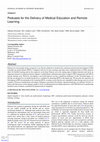
Ecosystem Transformation, 2021
The improvement of water management calls for action in the Republic of Armenia. Nowadays, the de... more The improvement of water management calls for action in the Republic of Armenia. Nowadays, the development of the hydrobiological monitoring approaches and procedures is the main goal. However, a lack of knowledge on the background conditions prevents further activities of revaluating of the methods used for water monitoring in Armenia with the EU WFD principles. Following the results of baseline studies conducted in the Debed River system, it was concluded to investigate small tributaries in order to find the most relevant and the best available site in the drainage basin. The study aims to analyse the community of benthic macroinvertebrates of the Tandzut River. We suggest the Tandzut River as a relevant substitution for the recent best available site in the area due to the ecological status of the upper reaches of the Tandzut River, which is by one category higher than the recent best available site of the Pambak River system according to BMWP index.
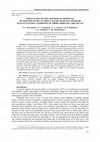
Vestnik of Astrakhan State Technical University. Series: Fishing industry
Endemic fish species of Armenian ichthyofauna – the Sevan trout (Salmo ischchan, Kessler, 1877) i... more Endemic fish species of Armenian ichthyofauna – the Sevan trout (Salmo ischchan, Kessler, 1877) is registered in the Red Book of Animals of the Republic of Armenia as critically endangered (corresponds to IUCN category: CR A2cd). Its natural reproduction hardly occurs as a result of numerous problems related to the use and management of water and bio-resources in the drainage basin of Lake Sevan. The Lichq River is formerly known as a spawning river for two ecological races of Sevan trout, but because of different factors there are no more wild populations of Sevan trout spawning. The aim of the study was checking the efficiency of two methods of egg incubation in the Lichq River for restoration of Gegarkuni population. The experiments were carried out with newly fertilized and eyed eggs of Gegarkuni in the same periods and in the same areas to avoid the unforeseen effects of environmental factors on assessment. The results showed that the mortality rate of green eggs in the natural...

Environmental Science and Pollution Research
Endemic fish species of Armenian ichthyofauna—Sevan trout (Salmo ischchan Kessler, 1877)—is regis... more Endemic fish species of Armenian ichthyofauna—Sevan trout (Salmo ischchan Kessler, 1877)—is registered in the Red Book of Animals of the Republic of Armenia as “Critically Endangered” (corresponds to IUCN category: CR A2cd). Its natural reproduction hardly occurs as a result of numerous problems related to the use and management of water and bio-resources in the Lake Sevan drainage basin.Masrik River is formerly known as a spawning river for two ecological races of the Sevan trout, but there is no up-to-date and in-depth studies of its potential to support natural reproduction. Thus, a set of spawning criteria was arranged as matrix and state of Masrik River as spawning area for the Sevan trout was assessed. The results showed that the potential of different parts of Masrik River to support natural reproduction of Sevan trout varied from quite appropriate to inappropriate. The main limiting factors revealed were water temperature, velocity and substrate conditions.
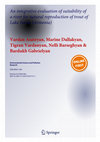
Manuscript, 2020
Endemic fish species of Armenian ichthyofauna—Sevan trout (Salmo ischchan Kessler, 1877)—is regis... more Endemic fish species of Armenian ichthyofauna—Sevan trout (Salmo ischchan Kessler, 1877)—is registered in the Red Book of
Animals of the Republic of Armenia as “Critically Endangered” (corresponds to IUCN category: CR A2cd). Its natural reproduction
hardly occurs as a result of numerous problems related to the use and management of water and bio-resources in the Lake
Sevan drainage basin.Masrik River is formerly known as a spawning river for two ecological races of the Sevan trout, but there is
no up-to-date and in-depth studies of its potential to support natural reproduction. Thus, a set of spawning criteria was arranged as
matrix and state of Masrik River as spawning area for the Sevan trout was assessed. The results showed that the potential of
different parts of Masrik River to support natural reproduction of Sevan trout varied from quite appropriate to inappropriate. The
main limiting factors revealed were water temperature, velocity and substrate conditions.
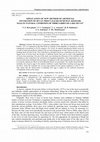
Vestnik of Astrakhan State Technical University. Series: Fishing industry
Endemic fish species of Armenian ichthyofauna – the Sevan trout (Salmo ischchan, Kessler, 1877) i... more Endemic fish species of Armenian ichthyofauna – the Sevan trout (Salmo ischchan, Kessler, 1877) is registered in the Red Book of Animals of the Republic of Armenia as critically endangered (corresponds to IUCN category: CR A2cd). Its natural reproduction hardly occurs as a result of numerous problems related to the use and management of water and bio-resources in the drainage basin of Lake Sevan. The Lichq River is formerly known as a spawning river for two ecological races of Sevan trout, but because of different factors there are no more wild populations of Sevan trout spawning. The aim of the study was checking the efficiency of two methods of egg incubation in the Lichq River for restoration of Gegarkuni population. The experiments were carried out with newly fertilized and eyed eggs of Gegarkuni in the same periods and in the same areas to avoid the unforeseen effects of environmental factors on assessment. The results showed that the mortality rate of green eggs in the natural...
Uploads
Papers by Marine Dallakyan
Animals of the Republic of Armenia as “Critically Endangered” (corresponds to IUCN category: CR A2cd). Its natural reproduction
hardly occurs as a result of numerous problems related to the use and management of water and bio-resources in the Lake
Sevan drainage basin.Masrik River is formerly known as a spawning river for two ecological races of the Sevan trout, but there is
no up-to-date and in-depth studies of its potential to support natural reproduction. Thus, a set of spawning criteria was arranged as
matrix and state of Masrik River as spawning area for the Sevan trout was assessed. The results showed that the potential of
different parts of Masrik River to support natural reproduction of Sevan trout varied from quite appropriate to inappropriate. The
main limiting factors revealed were water temperature, velocity and substrate conditions.
Animals of the Republic of Armenia as “Critically Endangered” (corresponds to IUCN category: CR A2cd). Its natural reproduction
hardly occurs as a result of numerous problems related to the use and management of water and bio-resources in the Lake
Sevan drainage basin.Masrik River is formerly known as a spawning river for two ecological races of the Sevan trout, but there is
no up-to-date and in-depth studies of its potential to support natural reproduction. Thus, a set of spawning criteria was arranged as
matrix and state of Masrik River as spawning area for the Sevan trout was assessed. The results showed that the potential of
different parts of Masrik River to support natural reproduction of Sevan trout varied from quite appropriate to inappropriate. The
main limiting factors revealed were water temperature, velocity and substrate conditions.